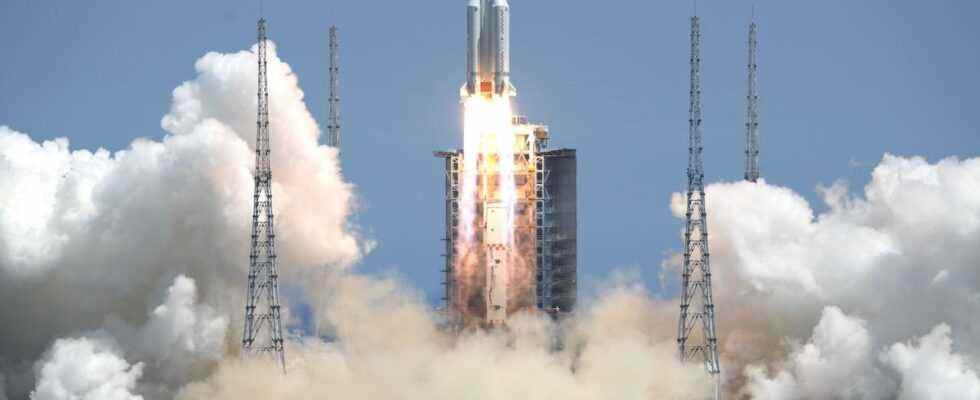China took off on July 24 its most powerful launcher, Long March 5B (CZ-5B), to transport the new Wentian module to its space station. Docked the same day, it nearly doubles the space available to astronauts and will support long-duration science missions.
It’s a juggernaut!
Make way for Wentian aboard the Chinese space station
Wentian is a huge space station module. Almost 18 meters long, 4.2 meters in diameter for its pressurized part, 23.2 tonnes on the scale… A heavyweight champion so that China can have new capacities within its space station!
And for that, the national agency needed the most capable launcher in its arsenal: CZ-5B, a special version dedicated to low orbit, so powerful that it can carry 25 tons under its large fairing. The take-off took place on July 24 at 8:22 a.m. (Paris), for a little more than 8 minutes of thrust from the Wenchang site, which welcomed a large public and more and more eager for take-offs in the benefit of the inhabited program.
It must be said that CZ-5B is spectacular, with its central stage (Hydrogen-oxygen engines) and its four powerful boosters (Kerosene-oxygen engines). And this “show”, broadcast live on Chinese television, ended in success and the ejection of Wentian into low orbit.
The station goes to level 2
Once in orbit, the Wentian module partially extended its large solar arrays, each 30 meters long, before propelling itself to meet the SSC and then docking after just 13 hours of flight. A feat due to the precision of the injection into orbit, but also maneuvers to then reach the station flying at an altitude of approximately 390 km and an inclination of 42°.
The three occupants of the SSC, Chen Dong, Liu Yang and Cai Xuzhe then waited a bit before opening the connecting hatch and entering their new large laboratory for the first time. The pressurized space is voluminous, especially since a large part of the scientific installations (rather medically oriented) that will take place inside are currently missing: an immaculate station without overflowing storage is a new station!
There are, in addition to the locations for scientific racks, three new berths for astronauts and an airlock dedicated to extravehicular outings at its end. Outside, the agency has so far installed a new robotic arm, but also many locations for experiments on the flanks of Wentian.
The Tetris is just getting started
The Chinese space station now consists of two permanent modules, Tianhe (main module) and Wentian, but also a Tianzhou 4 cargo ship and the Shenzhou-14 manned capsule. By the end of autumn, the teams will use the new robotic arm to change Wentian’s place and form a “T” with the arrival of a second large scientific module, Wentian’s “twin” dedicated to experiments. more physics-oriented, Mengtian.
Until then, the crew on board will be hard pressed to install and set up all the interior and then exterior systems, so that the station quickly reaches its full potential. It will take time to put everything in place, and even the next Chinese crew rotation, scheduled for next November, will have to put the heart into the work.
Floor drop to be expected
On the land side, a new controversy is to be expected on the safety of Chinese launches. Indeed, as for the other take-offs of CZ-5B, the very imposing first stage (21 tons empty) will enter in an uncontrolled way somewhere on Earth in the days to come (between 42° North and 42° South).
Even if the danger is low, and the probability that it sinks into the ocean is particularly high, it is therefore to be hoped that the latter will burn up as far as possible from the inhabited areas that it will fly over several times from here. the. It will indeed be impossible to predict more than a few hours in advance the area of the globe that will be affected.
Source : space flight now

4